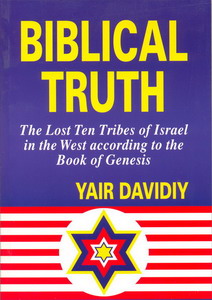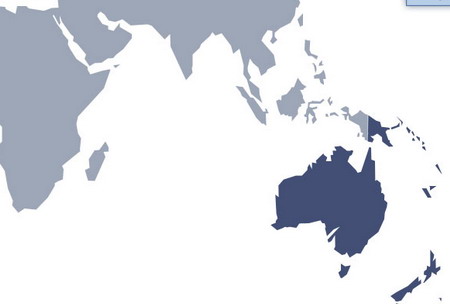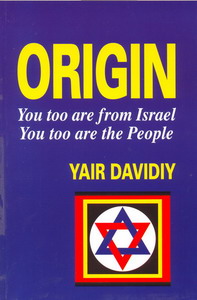
Symbol of United Israel
The Brit-Am Rose

Symbol of United Israel
|
Brit-Am Discussion Group |
Contents by Subject |
Research Revelation Reconciliation Contribute |
Site Map Contents in Alphabetical Order |
This Site |
|

|
The Lost Ten Tribes of Israel according to the Book of Genesis Biblical Prophecy Predicted that the Lost Tribes of Israel would be found amongst Western Nations. Biblical Verses analysed in the light of the Hebrew language, Rabbinical Commentary, and Historical Reality. A valuable educational, inspirational, and enjoyable work |
The Land of Sinim |
"Central Africa as a Source of Tin" by John E. Dayton item #163For an idea of Phoenician Sailing activity see our articles on:
"Recent lead isotope analysis of lead ingots found in Haifa [i.e. in the State of Israel] in 1982 have thrown new light on possible sources of Bronze Age tin. The analyses of Bergernanli show that some of the Haifa tin came from the extensive tin fields of Central Africa".
The Maps
The idea of a Great Southern land, to balance the known land masses of the Northern Hemisphere, originated with the Classical Greeks. Both the Mela Map of 43 M.E. and the Ortelius map of 1570 show this mythical continent, Terra Australis Incognito, which persisted on the maps until Captain James Cook finally dispelled the idea by his exploration of the Antarctic Seas.
History of Australia
For at least a number of centuries, Macassar [in Indonesia] had traded with Indigenous Australians on Australia's north coast, particularly the Yolngu of north-east Arnhem Land.
Discovery of Australia
The people of Arnhem Land [North Australia] were exposed to continuous interaction with various visitors from Asia. Early Indian visitors from around the time of Christ are said to be the motivation for what is known as the Bradshaw figurines in Kimberly art. It is likely that the Chinese have had some knowledge of Australia since the 13th century or before. In c. 1300, Marco Polo made reference to the reputed existence of a vast southern continent.
DOWN UNDER HISTORY TAKES GIANT LEAP BACK
Middle Age cartographers Macrobius in the tenth century, Cecco d'Ascoli in the thirteenth century, and Marco Polo in the fourteenth displayed their belief in a great southern continent. Marco Polo depicted two great islands south-east of Java and wrote that they were seven hundred miles distant. Marco Polo's information is viewed as evidence of Chinese knowledge of the southern continent.
European discovery and the colonisation of Australia
The first records of European mariners sailing into 'Australian' waters occurs around 1606, and includes their observations of the land known as Terra Australis Incognita (unknown southern land). The first ship and crew to chart the Australian coast and meet with Aboriginal people was the Duyfken captained by Dutchman, Willem Janszoon.
Brit-Am Now 593
#2. Ancient Egyptians in Australia?
Note the following websites claim that Ancient Egyptians and Phoenicians were in Australia.
Brit-Am believes this is correct but we should be careful about accepting evidence from unconfirmed sources.
The URLS with excerpts:
http://www.archaeologyanswers.com/egypt.htm
Chemical analysis of some Ancient Egyptian Mummies has revealed the presence of Eucalyptus Oil which indicates contact with Australia in the days of the Pharaohs!
Did you know that death beliefs and rites of Ancient Egypt (including mummification) are held by Arnhem Land (Australia) and Torres Strait natives? The incisions and method of embalming are identical to the practice of 2,900 years ago in Egypt.
http://www.internetezy.com.au/
~mj129/strangephenomenon.html
Aboriginal Cultures {Egyptian Influences}
While investigating Aboriginal cultures in the North-West Kimberly's during 1931, Professor A.P Elkin of Sydney University came upon tribes displaying Mediterranean racial features, with Egyptian words in their language. Professor Elkin also recorded ...an Earth Mother cult identical in every respect with that of the Ancient Egyptians. These findings led Professor Elkin to believe there were historical connections with the Mediterranean dating to before the time of Christ. Torres Strait islanders once mummified their dead in a way which Cambridge University Anthropologists noticed was identical to the method practiced during the 21st Dynasty 2,900 years ago. The inference is that Egyptians seamen, settled in Torres Strait, taught the people there how, in their own ritual fashion, to preserve the bodies of the dead. The custom continued until Christian missionaries forbade it late last century (1800's) If Egyptians, or folk from their part of the world, did reach Australia they supposedly took home materials as lasting evidence of their visit.
Eucalyptus 1000 B.C
Such evidence exists. In 1964 the tomb of a woman, dating back to 1,000 B.C was found in the Jordan Valley. Examination of the body revealed that Eucalyptus resin was employed in the embalming process. As in those times Eucalyptus could only have been obtained from either Australia, Torres Strait or New Guinea, does it not seem reasonable to assume that the Ancient Egyptians must have been here? Of course, some authorities are going to cry absurd to such claims, preferring to confine themselves to the traditional view of Australian discoveries and exploration.
http://www.crystalinks.com/auspetroglyphs.html
At the mouth of the Glenely River (SA), there are human figures resembling Phoenician seafarers garbed in clothing that includes a peculiar cap worn by these people in biblical times.
Like the third part of exiled Israelites in the Midrash, so too, were the Cimmerians in Classical Literature to be associated with Clouds, Mountains, or simply regions, of Darkness. A word root "comer" (reminiscent of "Cimmerian") in both Hebrew and Latin even connotes "darkness"!16 At one stage a portion of the Cimmerians were to be found in the Crimean Peninsula. At that time the climate was much wetter in the Crimean region than it is now and the area was apparently always cloudy. In Latin Literature there existed a phrase "Af tenebrae Cimmeriae" meaning "Cimmerian Darkness" and applied to the Crimea17. The bulk of the Cimmerians via the Balkans entered Europe and moved westward. They are identified in general with the Celts. The name "Celt" has been interpreted as:And we continue in the same vein bring more examples and showing the linkage between the Western Celts in Classical Literature and Thought, and the Rabbinical Description of the Lost Tribes as being hidden. It is worth pointing out that the Sages and Classical Writers of Greece and Rome lived about the same time and came from a similar cultural background despite their relgious differences.
"Meaning hidden the word which gives us the Irish form `ceilt', i.e. concealment or secret, and the word which gives us the English word kilt". PETER BERRESFORD ELLIS, "The Celtic Empire," London, 1990, p.9.The Scottii who from Scythia reached Ireland and from there went to Scotland were counted as Celts. Their name ("Scotoi") in Greek was understandable as meaning obscure or hidden19. In Britain and Brittany (Gaul) lived a people called Ostrynimians by the Carthaginians and Phoenicians and this name also is said to mean hidden20 from the Hebrew root "sater". The god Saturn who allegedly reigned in the British Isles too has a name derivable in Hebrew from the same root ("sater") and connoting the "hidden god". Pagan writers identified Saturn with Israel. A portion of the Lost Tribes was understood to be hidden by the Clouds of Darkness. We find indeed amongst the Celts (especially those of Britain) terminology that relates them to the associated concepts of “hidden”, “clouds”, and “darkness”. This could be dismissed as coincidental were it not for the fact that too numerous other proofs from all fields point in the same direction.

|
You too are from Israel You too are the People Lost Tribes of Israel in the West. Main Biblical and Historical Points Summarized A fast-flowing, easy-to-read, well-presented overall view of the Scriptural and Historical evidence concerning the whereabouts of the Ten Lost Tribes of Israel in the world today. |
 |
Skewes Jewelry 
|
 |
 |
| Main Page |
 |